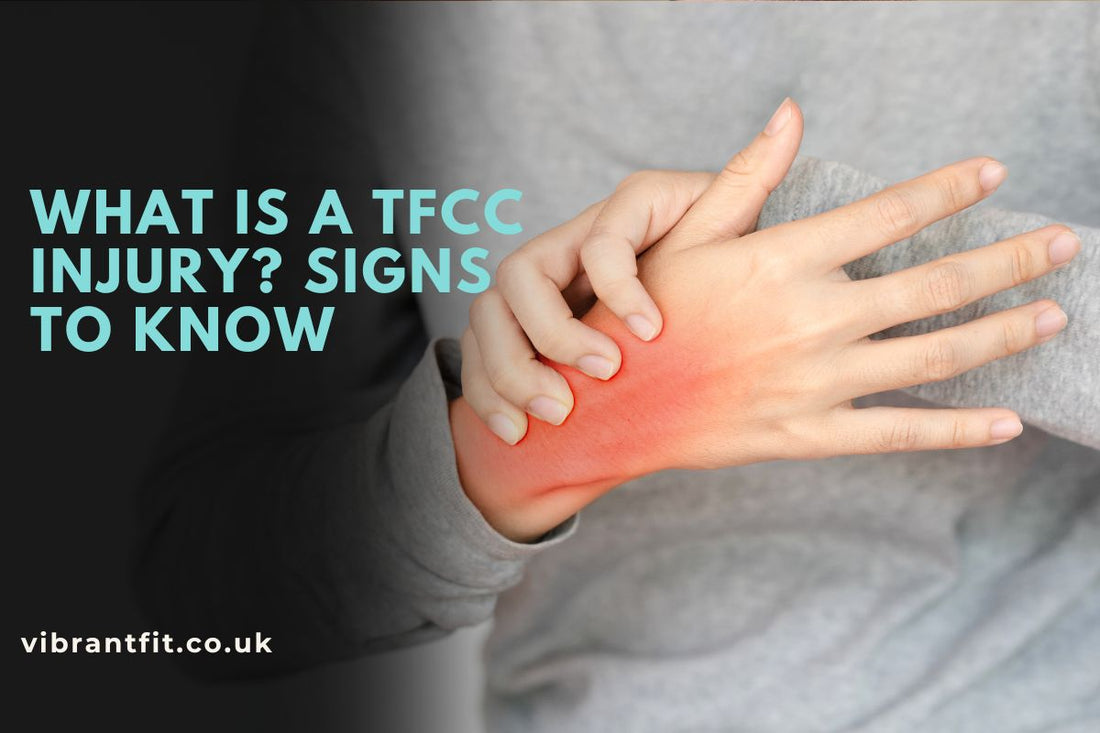
What is a TFCC Injury?
Share
If you have pain on the little finger side of your wrist, it could be a sign of a TFCC injury. The triangular fibrocartilage complex (TFCC) is a key part of your wrist. It helps keep the wrist stable and allows smooth movement. This small but important structure cushions the bones in your wrist and helps you rotate your forearm. When the TFCC is injured, it can cause pain, weakness, and difficulty using your hand properly. Understanding this injury can help you get the right treatment and get back to normal.
What is the TFCC?
The TFCC is a complex of cartilage and ligaments located on the ulnar side of your wrist — the side near your little finger. It acts as a stabiliser for the distal radioulnar joint (the joint between the two forearm bones). The TFCC consists of several parts: a cartilage disc, ligaments that connect the bones, and a sheath around the extensor carpi ulnaris tendon. Together, these structures support wrist movement and absorb load during activities. Because the central part of the TFCC has a poor blood supply, injuries there can take longer to heal.
What is a TFCC Injury?

A TFCC injury means damage or tears to any part of this complex. There are two main types: traumatic injuries, caused by sudden force like a fall, and degenerative injuries, which develop over time due to wear and tear. Either way, a TFCC injury affects your wrist’s stability and function. You may feel pain and notice weakness when you try to grip or rotate your wrist. Some people also hear clicking or popping sounds with certain movements.
Symptoms of a TFCC Injury

Signs of a TFCC injury usually include pain and discomfort on the little finger side of the wrist. You might notice that the pain worsens when bending or twisting your wrist. Swelling and tenderness around the area are common too. Many people experience a clicking or popping sensation when moving the wrist. In some cases, the grip strength in the hand decreases, and you might find it harder to do fine finger movements.
-
Pain on the ulnar side of the wrist
-
Pain worsens with wrist bending or rotation
-
Swelling and tenderness around the wrist
-
Clicking or popping during wrist movement
-
Reduced grip strength
-
Difficulty with finger dexterity
Causes and Risk Factors
TFCC injuries often happen due to sudden trauma or repetitive stress. Falling onto an outstretched hand is a common cause. Sports that involve wrist twisting or heavy pressure, like tennis or golf, can increase the risk. People with a longer ulna bone (positive ulnar variance) have a higher chance of injury because the TFCC bears more load. Over time, cartilage can wear down, especially in older adults, leading to degenerative tears.
-
Falling on an outstretched hand
-
Repetitive wrist twisting or pressure
-
Positive ulnar variance (longer ulna bone)
-
Wrist fractures or other injuries
-
Age-related wear and tear
Treatment Options
Most TFCC injuries start with non-surgical treatment. Resting the wrist and avoiding activities that worsen symptoms is important. Immobilisation with a splint or cast helps the injured tissues heal. Anti-inflammatory medications and corticosteroid injections can reduce pain and swelling. Physical therapy plays a key role in restoring movement and strength once healing begins. Surgery is considered if conservative measures fail or if the wrist is unstable.
-
Rest and activity modification
-
Splint or cast immobilisation (3 to 6 weeks)
-
Anti-inflammatory medications and corticosteroid injections
-
Physical therapy for range of motion and strengthening
-
Surgical repair if needed
Surgical Treatment
Surgery for TFCC injuries can be done arthroscopically or through an open approach. Arthroscopic surgery involves small incisions and uses a camera and specialised tools to repair or clean out damaged tissue. Open surgery is reserved for more complex tears and allows direct access to the injured area. Procedures may include repairing torn ligaments, removing damaged cartilage, or shortening the ulna to reduce pressure on the TFCC. After surgery, rehabilitation is crucial to regain wrist function.
Recommended Wrist Braces for TFCC Injury Support

If you’re dealing with a TFCC injury, finding the right wrist brace can really help ease your pain and support your healing. The TFCC Support Wrist Brace is made to give focused stability to the wrist’s little finger side, which can reduce discomfort and protect the area while you go about your day. For those with milder symptoms or who want something less restrictive, the UltraFlex Wrist Brace provides light compression and flexibility—perfect for everyday use or to prevent further strain. If you need something stronger and more adjustable, the Performance Wrist Brace offers firm support with a secure fit, great for people who stay active but still need good wrist protection. Picking the right brace to match your needs can speed up recovery and help you get back to your normal routine.
Prevention Tips
To reduce the risk of TFCC injury, it helps to protect your wrists during sports and activities that involve heavy use or twisting. Strengthening exercises for the wrist and forearm muscles can improve joint stability. If you experience wrist pain or discomfort, early medical advice and modification of activities can prevent worsening injury.
Also read : What is a Fractured Ulna
Conclusion
A TFCC injury can significantly impact your wrist’s stability and function, causing pain and limiting movement. Early recognition and proper treatment are essential to prevent long-term problems. Whether managed with rest, therapy, or surgery, most people recover well and regain normal wrist use. If you experience persistent wrist pain or instability, seeking medical advice promptly can help you get the care you need and return to your daily activities with confidence.
